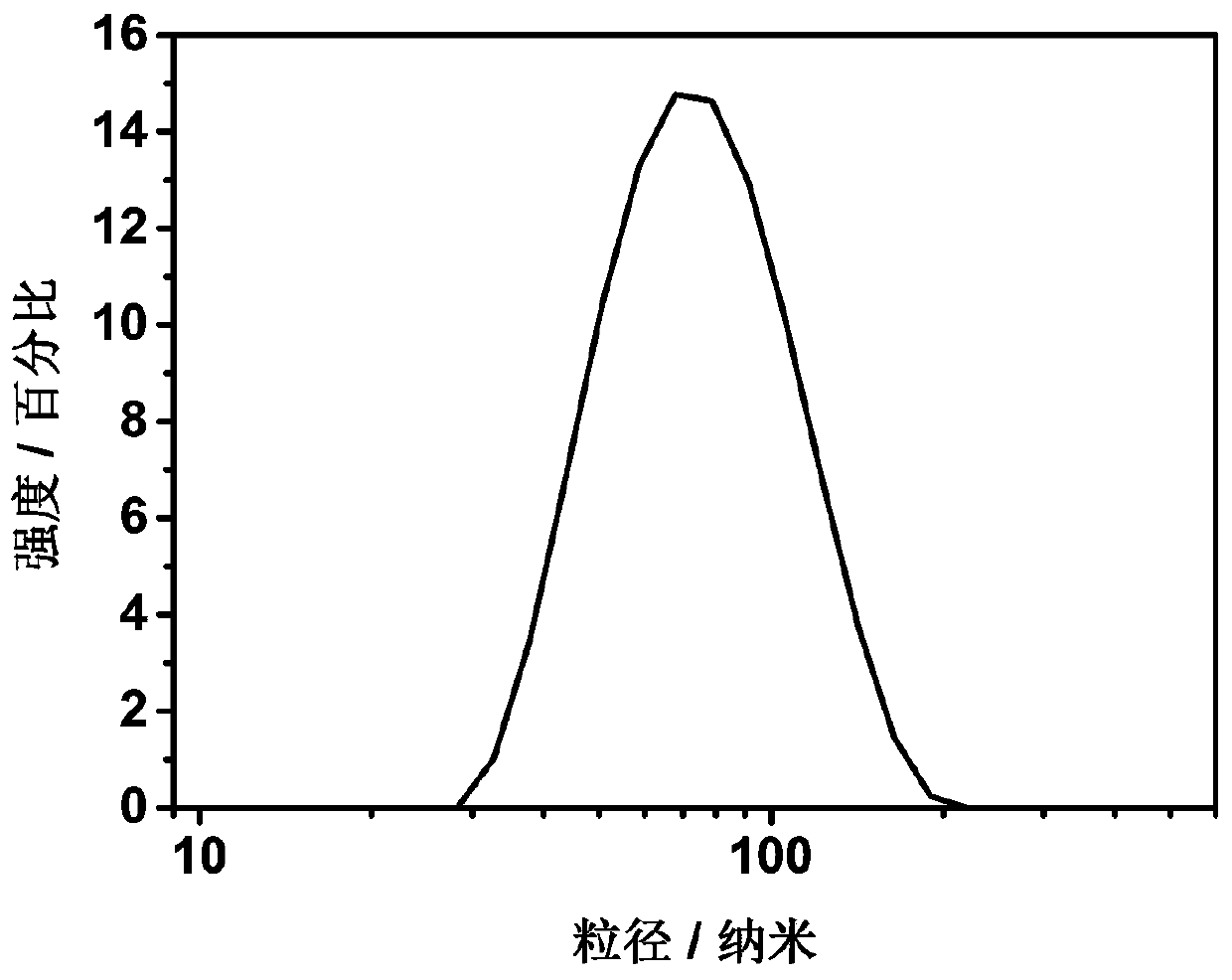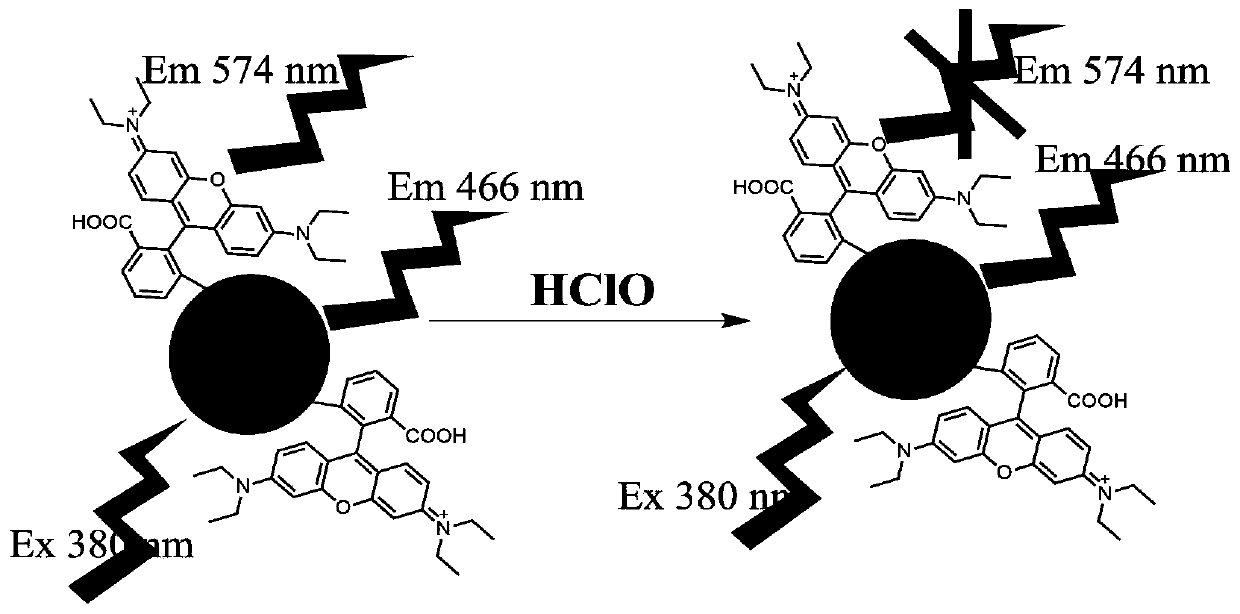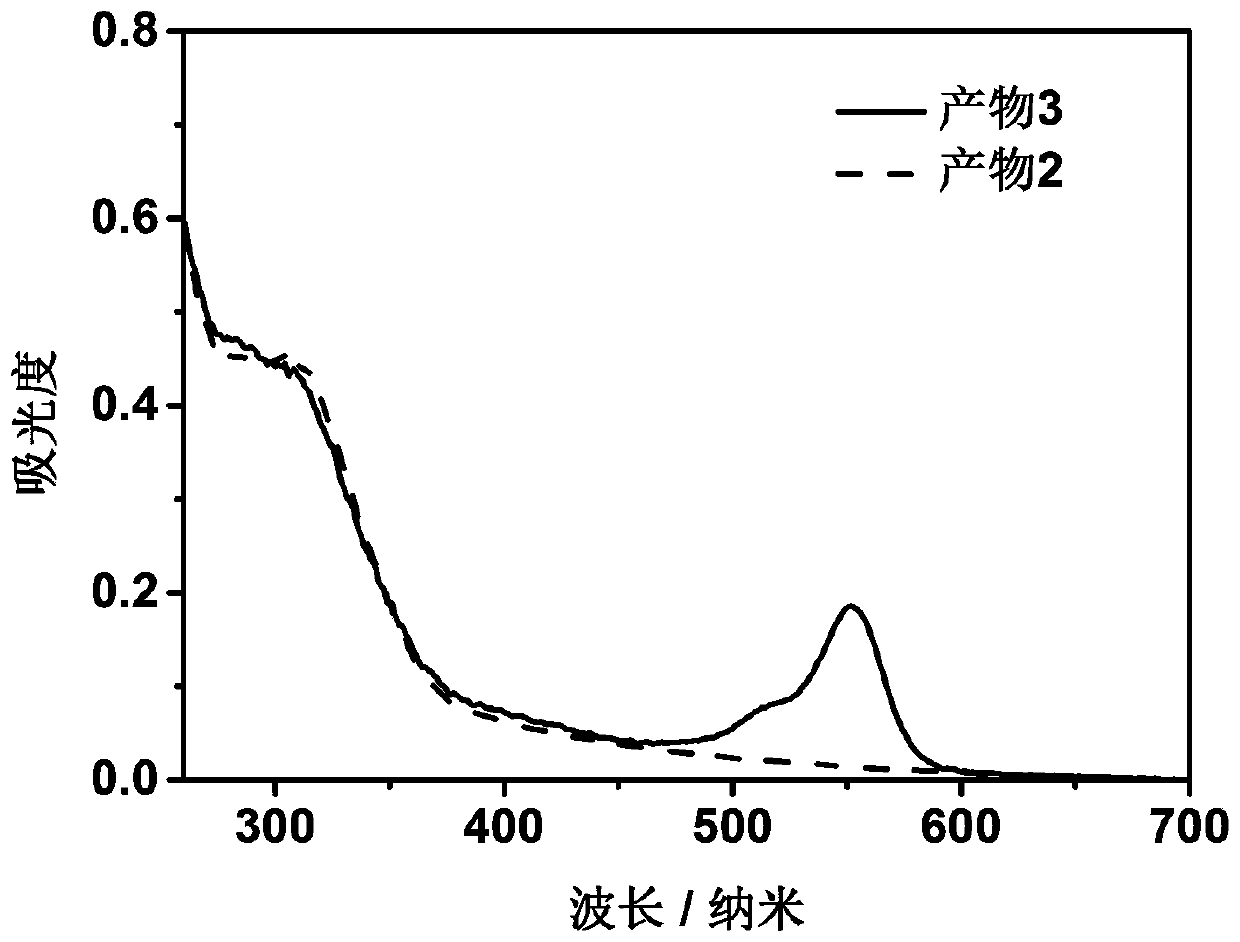Preparation and application of a polymer nanoparticle capable of ratiometric fluorescence detection of hypochlorous acid
A technology for the detection of hypochlorous acid and fluorescent polymers, used in fluorescence/phosphorescence, measurement devices, material analysis by optical means, etc., can solve problems such as limited applicability, reduced feasibility, etc. The effect of convenient post-processing and stable dispersion
- Summary
- Abstract
- Description
- Claims
- Application Information
AI Technical Summary
Problems solved by technology
Method used
Image
Examples
Embodiment 1
[0037] A method for preparing polymer nanoparticles with ratiometric fluorescence detection of hypochlorous acid, comprising the following steps:
[0038] (1) Esterification to synthesize 4-(1,2,2-triphenylvinyl)phenyl undecylenate.
[0039] Weigh 0.2g 4-(1,2,2-tristyryl)phenol (TPE-OH), 0.4g n-undecylenoyl chloride, 0.25g N,N-diisopropylethylamine (DIEA), in Dissolve TPE-OH and DIEA with 10mL of dichloromethane in a 25mL single-necked bottle, then dissolve n-undecyl chloride with 1mL of dichloromethane, slowly add the dissolved n-undecyl chloride into the single-necked bottle with a syringe, and react at room temperature for 24 hours After the reaction, the desired product was obtained by silica gel column chromatography separation method, and then the solvent was removed with a rotary evaporator, and after vacuum drying, the desired 4-(1,2,2-triphenylethenyl)phenyl Undecylenate (Product 1).
[0040] (2) Miniemulsion polymerization to prepare fluorescent polymer nanoparticl...
Embodiment 2
[0045] A method for preparing polymer nanoparticles with ratiometric fluorescence detection of hypochlorous acid, comprising the following steps:
[0046] (1) Esterification to synthesize 4-(1,2,2-triphenylvinyl)phenyl undecylenate.
[0047] Weigh 0.2g 4-(1,2,2-tristyryl)phenol (TPE-OH), 0.46g n-undecylenoyl chloride, 0.3g N,N-diisopropylethylamine (DIEA), in Dissolve TPE-OH and DIEA with 10mL of dichloromethane in a 25mL single-necked bottle, then dissolve n-undecyl chloride with 1mL of dichloromethane, slowly add the dissolved n-undecyl chloride into the single-necked bottle with a syringe, and react at room temperature for 24 hours After the reaction, the desired product was obtained by silica gel column chromatography separation method, and then the solvent was removed with a rotary evaporator, and after vacuum drying, the desired product 4-(1,2,2-triphenylethenyl)benzene could be obtained Undecylenate (Product 1).
[0048] (2) Miniemulsion polymerization to prepare fluo...
Embodiment 3
[0053] A method for preparing polymer nanoparticles with ratiometric fluorescence detection of hypochlorous acid, comprising the following steps:
[0054] (1) Esterification to synthesize 4-(1,2,2-triphenylvinyl)phenyl undecylenate.
[0055] Weigh 0.2g 4-(1,2,2-tristyryl)phenol (TPE-OH), 0.6g n-undecylenoyl chloride, 0.4g N,N-diisopropylethylamine (DIEA), in Dissolve TPE-OH and DIEA with 10mL of dichloromethane in a 25mL single-necked bottle, then dissolve n-undecyl chloride with 1mL of dichloromethane, slowly add the dissolved n-undecyl chloride into the single-necked bottle with a syringe, and react at room temperature for 24 hours After the reaction, the desired product was obtained by silica gel column chromatography separation method, and then the solvent was removed with a rotary evaporator, and after vacuum drying, the desired product 4-(1,2,2-triphenylethenyl)benzene could be obtained Undecylenate (Product 1).
[0056] (2) Miniemulsion polymerization to prepare fluor...
PUM
 Login to View More
Login to View More Abstract
Description
Claims
Application Information
 Login to View More
Login to View More - R&D
- Intellectual Property
- Life Sciences
- Materials
- Tech Scout
- Unparalleled Data Quality
- Higher Quality Content
- 60% Fewer Hallucinations
Browse by: Latest US Patents, China's latest patents, Technical Efficacy Thesaurus, Application Domain, Technology Topic, Popular Technical Reports.
© 2025 PatSnap. All rights reserved.Legal|Privacy policy|Modern Slavery Act Transparency Statement|Sitemap|About US| Contact US: help@patsnap.com



